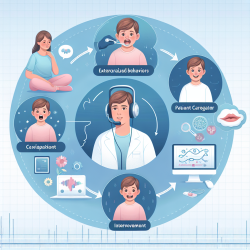Understanding the Link Between Autism Prevalence and Socioeconomic Status
As practitioners dedicated to the well-being of children, understanding the factors that influence the prevalence of Autism Spectrum Disorder (ASD) is crucial. A recent study titled Socioeconomic Inequality in the Prevalence of Autism Spectrum Disorder: Evidence from a U.S. Cross-Sectional Study provides valuable insights into how socioeconomic status (SES) impacts the prevalence of ASD among children in the United States.
The Study at a Glance
This cross-sectional study utilized data from the Autism and Developmental Disabilities Monitoring Network, analyzing a population of 557,689 eight-year-old children, with 3,680 identified as having ASD. The study found a dose-response relationship between SES and ASD prevalence, indicating that higher SES is associated with a higher prevalence of ASD.
Key Findings
- Children from higher SES backgrounds had a 1.25 times higher prevalence of ASD compared to those from medium SES backgrounds.
- The SES gradient was more pronounced in children with a pre-existing ASD diagnosis, suggesting potential ascertainment or diagnostic bias.
- No SES gradient was observed in children with co-occurring ASD and intellectual disability, indicating different influencing factors.
Implications for Practitioners
These findings highlight the importance of considering socioeconomic factors when diagnosing and providing services for children with ASD. Practitioners should be aware of potential biases in diagnosis and strive to ensure equitable access to diagnostic and therapeutic services for all children, regardless of their socioeconomic background.
Encouraging Further Research
The study suggests that the SES gradient in ASD prevalence may not be entirely due to ascertainment bias. This opens avenues for further research into potential causal mechanisms or confounding factors associated with high SES and ASD vulnerability. Understanding these factors could lead to improved diagnostic practices and targeted interventions.
Actionable Steps for Practitioners
- Advocate for equitable access to diagnostic services across different socioeconomic groups.
- Engage in continuous education to recognize and mitigate potential biases in ASD diagnosis.
- Collaborate with researchers to explore the underlying causes of the SES-ASD association.
To read the original research paper, please follow this link: Socioeconomic Inequality in the Prevalence of Autism Spectrum Disorder: Evidence from a U.S. Cross-Sectional Study.










